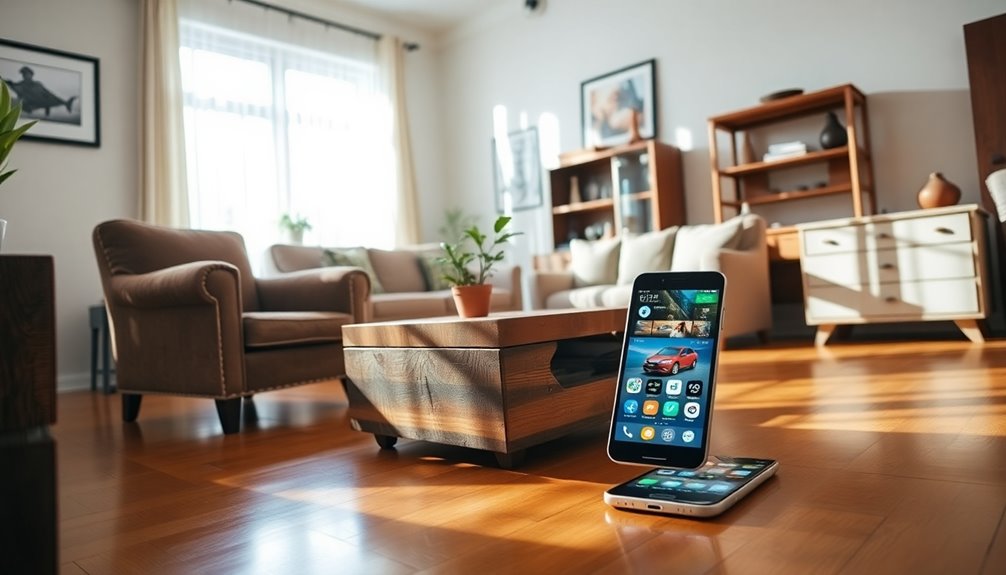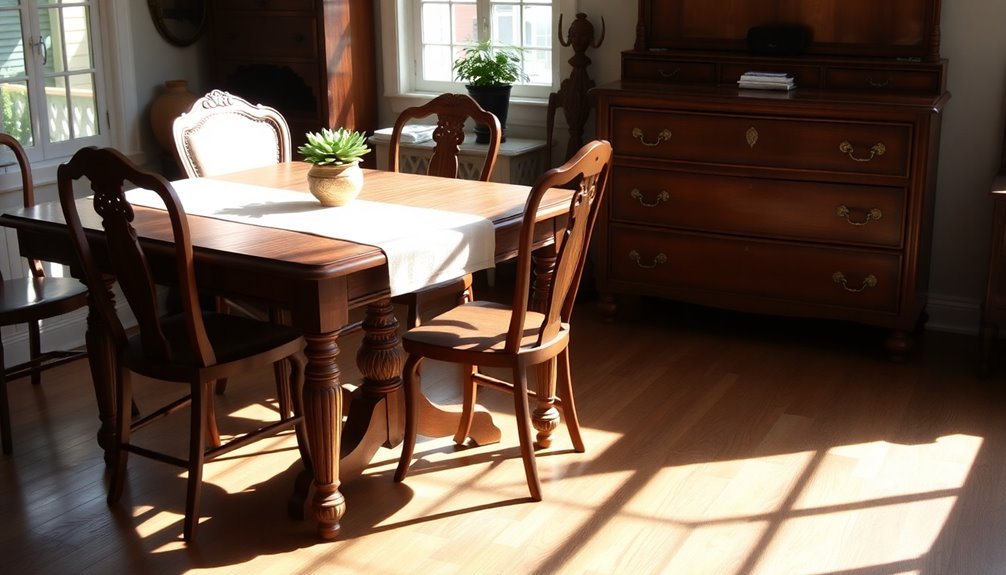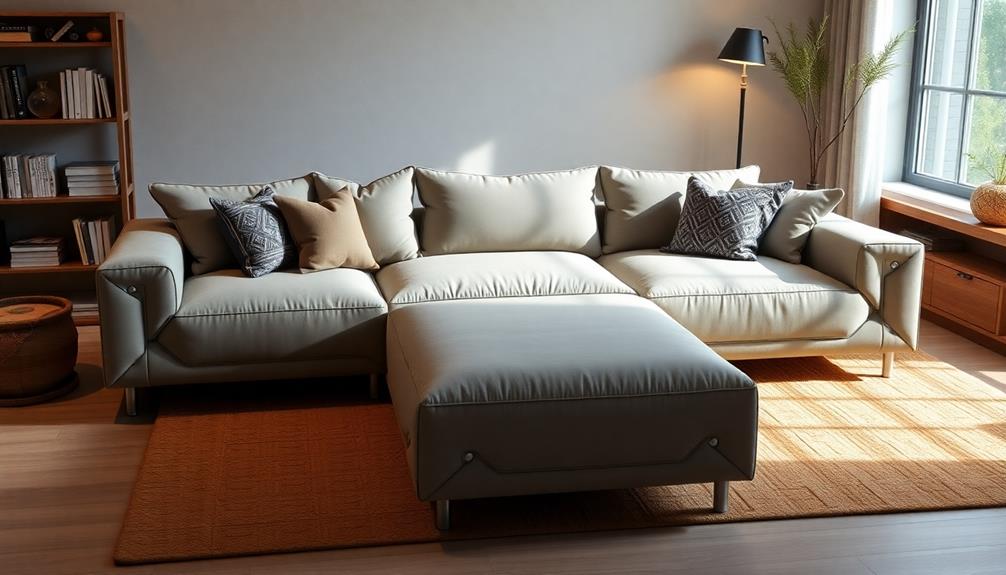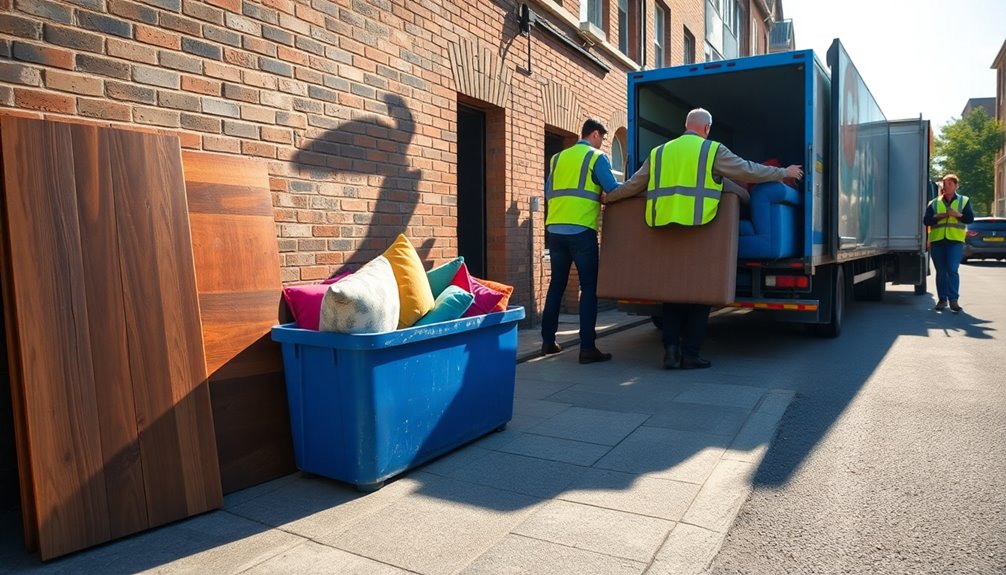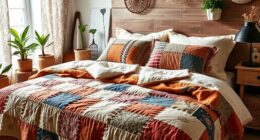To sell used furniture online, start by choosing the right platform—Facebook Marketplace or OfferUp are great for local sales without fees. Next, assess your items’ condition and clean them thoroughly. Set competitive prices, around 50-70% of their original value, and factor in any repairs needed. When listing, use high-quality images and detailed descriptions that highlight your furniture’s features. Be transparent about pricing and communicate effectively with potential buyers. Lastly, consider marketing your items through social media to reach a wider audience. You’ll uncover even more tips to enhance your selling journey. Additionally, be prepared to answer questions from potential buyers and be willing to negotiate prices to facilitate a quicker sale. If you’re also considering investing in new furniture, familiarize yourself with how to choose a sofa online to ensure that you select a piece that suits your style and needs. Finally, once your item sells, arrange for a safe and convenient pickup to complete the transaction smoothly.
Key Takeaways
- Assess the condition of your furniture, clean it thoroughly, and make minor repairs to enhance its appeal.
- Choose the right selling platform like Facebook Marketplace or OfferUp to reach local buyers effectively.
- Craft detailed listings with high-resolution images and transparent descriptions to attract potential buyers.
- Set competitive prices by researching similar items and considering the condition and seasonal demand.
- Use social media and engaging content to promote your listings and connect with potential buyers.
Choosing the Right Platform

Choosing the right platform for selling your used furniture can make all the difference in your success. Each platform has unique fees, target audiences, and listing processes, so it's essential to choose one that fits your needs.
If you prefer a no-cost option, Facebook Marketplace is a great choice, allowing you to connect with local buyers quickly. OfferUp also has no listing fees, focusing on local sales, which means you can negotiate prices directly. Bonanza offers a straightforward setup with no listing fees, but keep in mind it charges a commission based on your advertising choice.
For those selling high-end or unique items, 1stdibs is a strong contender, although it requires a monthly fee and has additional transaction costs. AptDeco targets metropolitan areas and provides a seamless experience, but its fees range from 19% to 29% of the sale price. Additionally, local selling options such as consignment shops can offer personalized service while marketing your items effectively.
Ultimately, consider what services you need, like delivery or quality assurance. If you want a hassle-free experience, AptDeco's integrated delivery might appeal to you, while OfferUp's in-person transactions allow for negotiation and local connections.
Assessing and Preparing Furniture
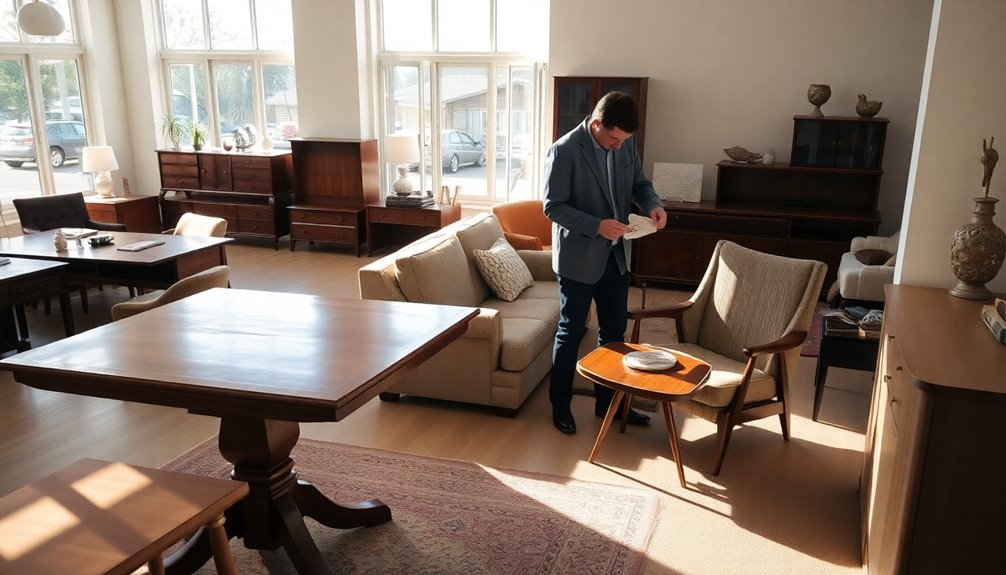
Once you've picked the right platform, it's time to assess and prepare your furniture for sale. Start by thoroughly examining its condition. Look for scratches, dents, or any other signs of wear and tear. Check the quality of materials, ensuring you know whether it's solid wood, pressboard, or veneered. Don't forget to inspect the backside for hidden damages, and test functional parts like drawers and doors to make sure everything operates smoothly. Additionally, make sure the piece is sturdy and stable to avoid any last-minute issues before the sale.
Next, give your furniture a good cleaning to enhance its appeal. Address minor repairs, such as fixing loose legs or tightening screws. You might want to tackle any stains or scratches using DIY methods. Polishing or refinishing surfaces can also make a big difference, while removing musty odors is crucial for attracting buyers.
Consider the weight and portability of your furniture. Lift or tip it to gauge how easy it'll be to move. Think about logistics—do you need to hire movers or rent a truck? Check for handles that can ease transportation, and be prepared with any tools or equipment that might be necessary. Taking these steps will help you present your furniture in the best light possible.
Pricing Strategies

When setting prices for your used furniture, it's essential to base your strategy on thorough market research. Start by checking online platforms, local classifieds, and resale shops to understand what similar items are selling for. Websites like Shopify can help you identify popular trends in the furniture market, while analyzing sales data from marketplaces like AptDeco will provide insight into average price ranges.
Assess the condition and quality of your furniture carefully. Look for wear and tear, scratches, or stains, and adjust your prices accordingly. High-end brands or well-crafted pieces can command higher prices, so factor that in as well. Remember, minor imperfections might add character, especially in vintage items, but they can still affect value. Additionally, consider seasonal demand when pricing your items, as it can significantly influence buyer interest.
Set a competitive price range that reflects both your research and the condition of your furniture. Offering a slightly lower price can attract potential buyers, but ensure your pricing remains profitable. Finally, consider additional factors like the era, rarity, and trends in interior design to justify your prices. By clearly articulating the value of your items, you'll make it easier for buyers to see why your furniture is worth the price you've set.
Listing and Selling Process
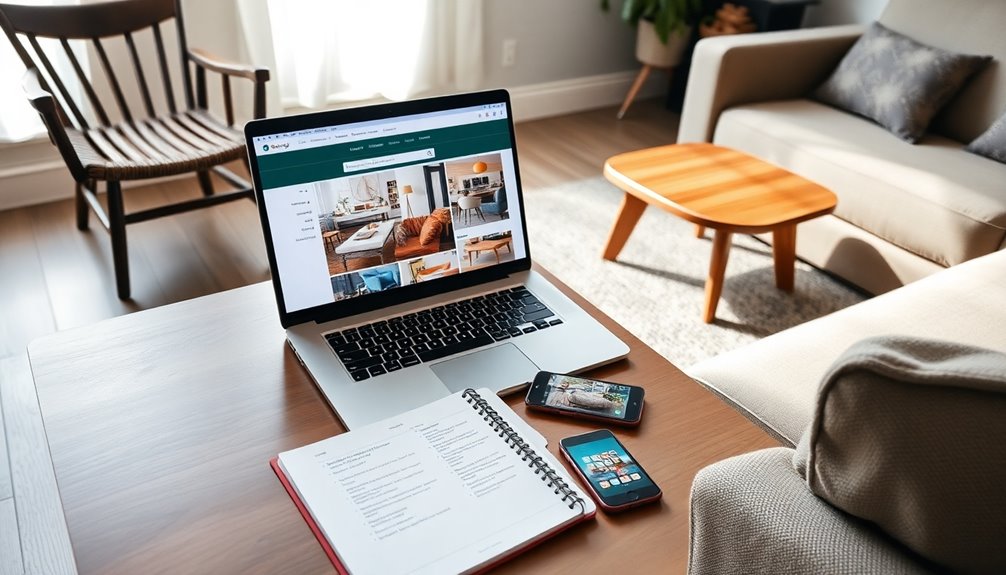
The listing and selling process is crucial for successfully moving your used furniture online. Start by crafting detailed descriptions that include the brand, collection name, color, and dimensions. Mention the original price and provide a product link if available, helping buyers gauge the item's value. Be transparent about any defects, such as scratches or stains, and include close-up images to showcase these issues.
Next, clean and prep your furniture to enhance its appeal in photos. Take high-resolution images from various angles in natural light, avoiding filters to represent the piece authentically. If you're selling rare items, consider seeking professional appraisals to establish fair pricing. Remember that gently-used furniture from high-end brands like Restoration Hardware tends to have a higher resale potential.
Choose the right platform for your sale. Options like AptDeco streamline the process, while eBay offers high traffic and bidding options. For local sales, consider Craigslist or Facebook Marketplace, especially if you want to avoid shipping costs.
Finally, manage the sale by determining shipping feasibility and associated costs. Use services that provide secure transactions and clear communication with buyers. Address any returns or issues promptly to maintain professionalism throughout the selling journey.
Marketing and Promotion

Marketing and promotion are essential for attracting buyers to your used furniture listings. Start by utilizing online marketplaces like Wayfair, Houzz, and eBay, where you can reach customers actively searching for furniture. Don't forget local online marketplaces to expand your audience. Just be prepared for any potential fees associated with these platforms.
Leverage social media to showcase your items. Use Instagram for high-quality photos and videos, and take advantage of Stories for behind-the-scenes content. Create a Facebook business page to share product information, run contests, and engage with your audience. Pinterest is excellent for showcasing your furniture and inspiring potential buyers, while Twitter allows for real-time interaction. Incorporating mindfulness techniques can also enhance your engagement with potential buyers by creating a more authentic connection.
Consider creating engaging content by posting visuals that highlight your furniture's style and functionality. Share tips on home decor and run contests to boost engagement. Videos can be particularly effective, showing your furniture from different angles or offering assembly instructions. Additionally, offering free shipping can significantly enhance purchasing confidence and attract more buyers.
Finally, invest in targeted advertising on social media to reach potential buyers interested in furniture. Highlight unique selling points and consider collaborations with influencers to enhance your brand's visibility. With the right marketing strategy, you'll attract more buyers and increase your sales.
Logistics and Support
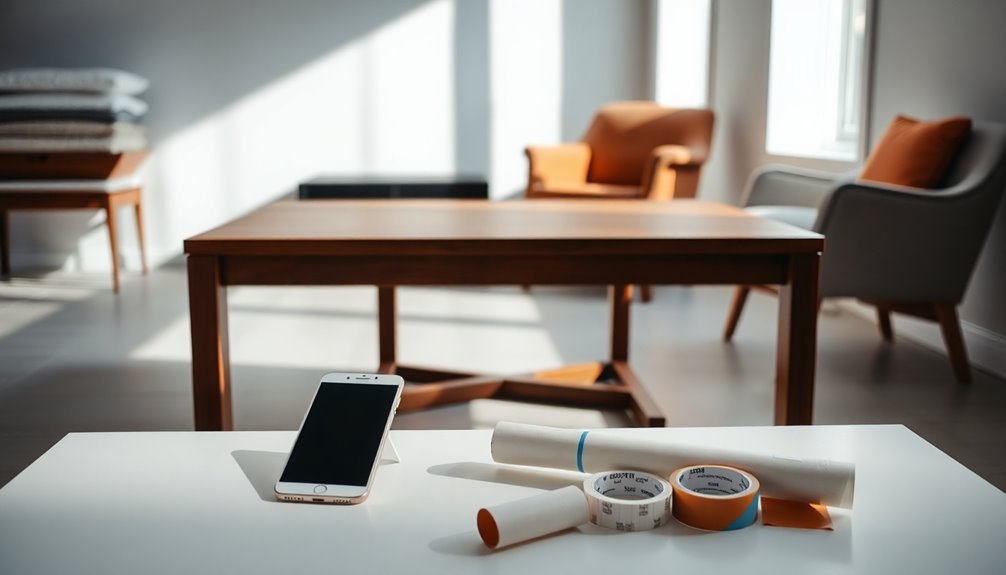
Effective logistics and support are crucial for a smooth selling experience when you're dealing with used furniture. Start by choosing the right platform for your items. Local marketplaces like Craigslist and Facebook Marketplace are ideal for quick, cost-free transactions, while broader platforms like eBay and Chairish can help you reach niche buyers. Research similar items to set fair prices, keeping in mind that pricing your furniture at 50-70% of its original price is generally effective. Additionally, aiming for 50-70% of the original price can help ensure your items attract potential buyers while reflecting their condition.
When it comes to shipping and delivery, services like uShip connect you with experienced carriers. Make sure to include important details such as dimensions and special handling instructions in your listings. Compare bids from carriers to find the best option and utilize tracking features to keep tabs on your shipment.
For additional support, consider on-demand services like GoShare for same-day delivery. Ensure clear communication with carriers about pickup and delivery times, and specify any access requirements. By taking these steps, you'll streamline the logistics process, making your selling experience much more efficient and enjoyable.
Photography Tips
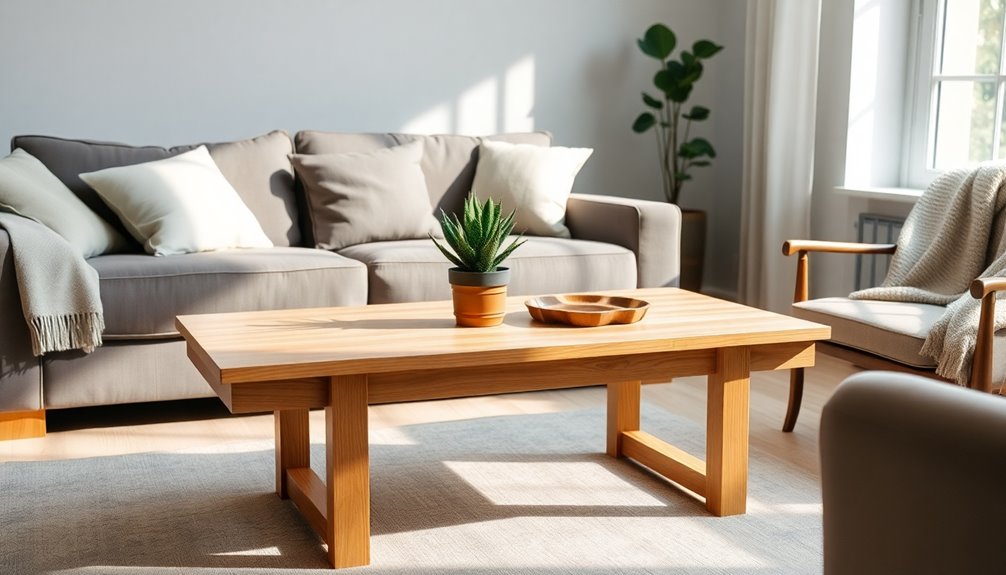
Capturing high-quality photos of your used furniture can significantly enhance your online listings and attract potential buyers. Start by using natural light to avoid discoloration and harsh shadows. Aim for a well-lit area, but steer clear of direct sunlight, as it can wash out colors. Avoid flash and filters; these can distort the true appearance of your items.
Shoot from multiple angles, providing a comprehensive view. Include head-on shots, side views, and rear views to show all aspects of the piece. Don't forget top-down shots for items with drawers or intricate designs. If you can, use a turntable for smooth, consistent angles. Staging and styling can also enhance the overall presentation of the piece, making it more appealing to potential buyers.
Keep your background plain and uncluttered to prevent distractions. Clear the area around the furniture and consider using simple staging items to evoke interest without overshadowing the main piece. Layer staging elements to create visual appeal, but ensure they complement rather than overpower your furniture.
Finally, include close-up shots to highlight unique features, materials, and textures. Capture any intricate carvings, special hardware, or decorative elements to showcase the item's quality and condition. This attention to detail can make all the difference in attracting buyers.
Effective Communication Techniques
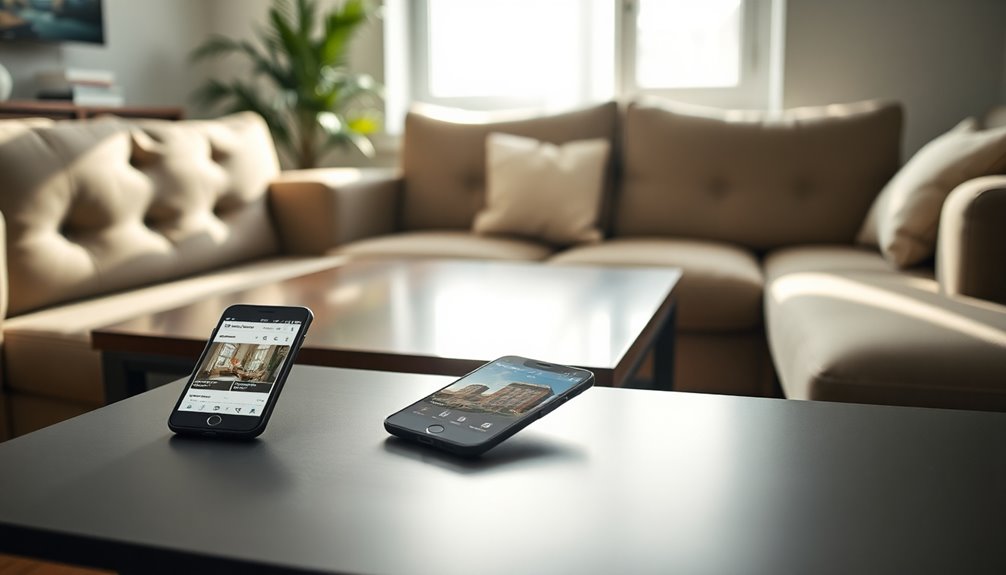
How can you ensure your communication connects with potential buyers when selling used furniture online? Start by actively listening to their needs. Maintain eye contact, nod, and smile to show you value their opinions. Pay attention to body language, as it can reveal how they feel about your product. Establishing healthy boundaries during negotiations can also create a more respectful and productive interaction.
Be sincere and humble about what you're selling—highlight both benefits and shortcomings. Adjust your tone to match theirs, ensuring a friendly yet professional interaction. Use open questions to dig deeper into their preferences and budget.
Adapt your sales approach to cater to each buyer's unique concerns. Develop a customer-focused message that clearly communicates the value of your furniture. Understanding customer challenges can help you tailor your pitch more effectively. Find out their preferred communication method, whether it's through email, phone, or in-person meetings.
When discussing product features, be transparent about pricing and explain why it's set that way. Share relatable stories of how others have benefited from the item to build credibility. Finally, create a sense of urgency without being pushy, prompting them to make a decision. Engaging language can help reinforce that connection, making them feel understood and valued.
Understanding Fees and Commissions
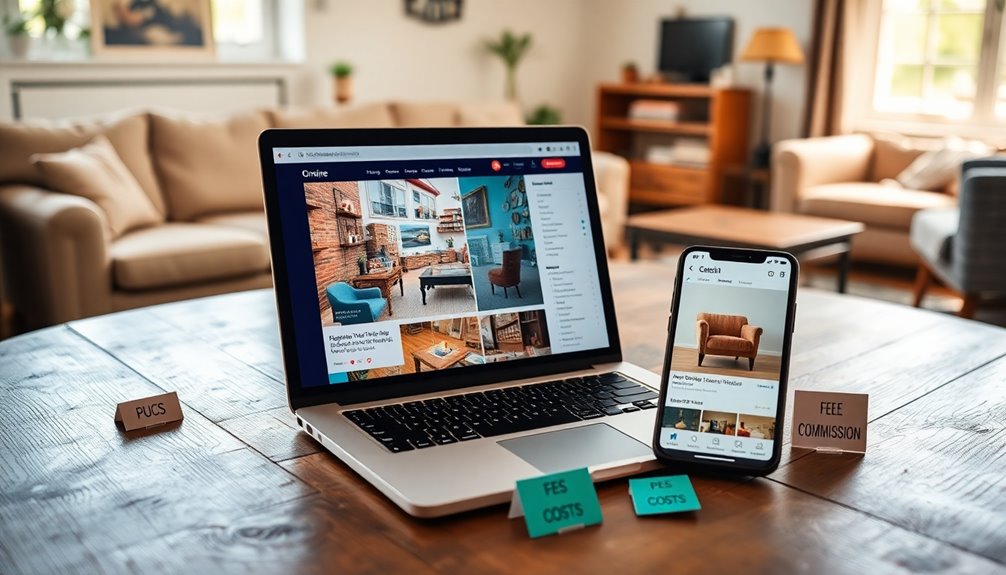
When you decide to sell used furniture online, understanding the various fees and commissions is crucial to maximizing your profits. Each platform has its own fee structure, which can significantly impact your earnings.
For instance, percentage-based commissions like Chairish's 22% on vintage items or Etsy's 6.5% transaction fee can eat into your sales. eBay's Final Value Fee varies from 0.5% to 15%, depending on the sale price, while Reverb charges a 5% commission. Knowing the typical commission rates across different marketplaces can help you choose the best platform for your furniture sales.
Flat fees can also add up. Poshmark takes a $2.95 fee for sales under $15, and Tradesy charges $7.50 for items under $50. Facebook Marketplace has a flat fee of $0.40 for shipments of $8 or less.
Additionally, be aware of transaction fees. Etsy charges a 20 cent listing fee along with the 6.5% transaction fee, while eBay includes a $0.30 per order fee in its Final Value Fee. Ruby Lane even has a $25 monthly maintenance fee.
Knowing these fees upfront helps you set competitive prices and avoid surprises, ensuring you keep as much profit as possible.
Enhancing Buyer Experience
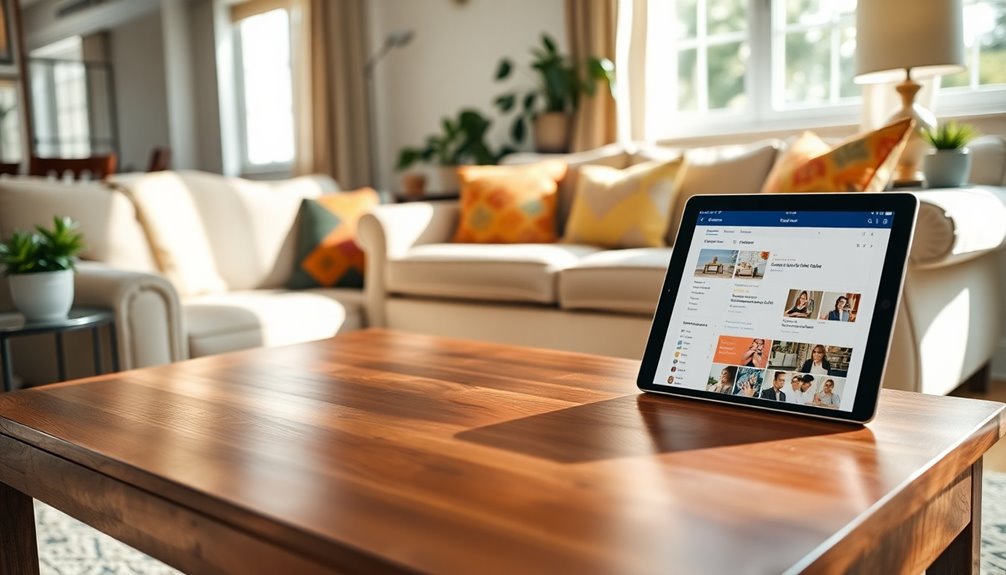
A smooth and enjoyable buying experience can make all the difference in selling used furniture online. Start by improving your website's usability. Ensure it loads quickly, simplifying the checkout process with fewer steps and multiple payment options. Easy navigation helps customers find what they need in no time, while a simple, intuitive layout enhances their overall experience. Don't forget to secure the checkout process to build trust. Additionally, prioritizing fast website speed can significantly improve conversion rates.
Next, enhance your visual content. Use high-quality images and 360° views to give buyers a detailed look at the furniture. Take multiple photos from different angles and ensure good lighting. Close-ups can highlight the condition and details, reducing returns by up to 50%.
Building trust and credibility is essential. Display customer reviews and testimonials prominently, and consider sharing the story behind each piece to add a personal touch.
Finally, offer interactive and personalized experiences. Implement live chat or chatbots for real-time support, and consider using augmented reality to let customers visualize furniture in their space. With these strategies, you'll create a positive buying experience that encourages sales and fosters customer loyalty.
Frequently Asked Questions
What Are the Legal Considerations for Selling Used Furniture Online?
When selling used furniture online, you've got to consider several legal aspects. First, check for prohibited items and ensure your furniture meets safety standards. Be upfront about any defects and provide accurate descriptions. Comply with local laws and consumer protection regulations, including fair pricing and transparent communication. Don't forget about tax liabilities and reporting requirements. Following these guidelines will help you avoid legal issues and create a smoother selling experience.
How to Handle Buyer Disputes or Complaints Effectively?
When handling buyer disputes or complaints, you need to stay calm and responsive. Listen to their concerns and acknowledge their feelings. Offer clear solutions, whether it's a refund, exchange, or repair. Make sure you communicate transparently about your policies and keep them updated on any progress. Document everything to protect yourself and ensure you follow up to confirm their satisfaction. This approach fosters trust and can turn a negative experience into a positive one.
Can I Sell Furniture Without Meeting the Buyer in Person?
Yes, you can sell furniture without meeting the buyer in person. Use online marketplaces that offer shipping options, like eBay or Chairish. You can arrange shipping through services like uShip, ensuring safe delivery. To protect your transaction, utilize secure payment methods such as PayPal. Always provide detailed photos and descriptions of your furniture to build trust. This way, you can handle everything remotely and still make a successful sale.
What Should I Do if My Item Doesn't Sell?
If your item doesn't sell, start by reassessing your pricing. Research similar items and consider lowering your price or offering discounts to attract buyers. Enhance your listing's presentation by cleaning and photographing the item better. Experiment with different sales channels to reach a wider audience. Lastly, promote your item through social media or flash sales to create urgency. Don't hesitate to make adjustments until you find the right approach.
How Do I Safely Accept Payment From Buyers?
To safely accept payment from buyers, use trusted methods like PayPal or secure credit card processors. Always opt for traceable options to protect yourself. Implement security measures such as two-factor authentication and monitor transactions for suspicious activity. For local sales, meet in public places and avoid cash. Consider using escrow services to hold payments until the sale is finalized. Keeping communication within the platform can also help maintain a secure transaction record.
Conclusion
Selling used furniture online can be a rewarding experience when you approach it the right way. By choosing the right platform, preparing your items well, and using smart pricing strategies, you'll attract potential buyers quickly. Don't forget to market your listings effectively and communicate clearly with interested shoppers. With attention to detail in your photos and a focus on enhancing the buyer experience, you'll turn your used furniture into cash in no time!
